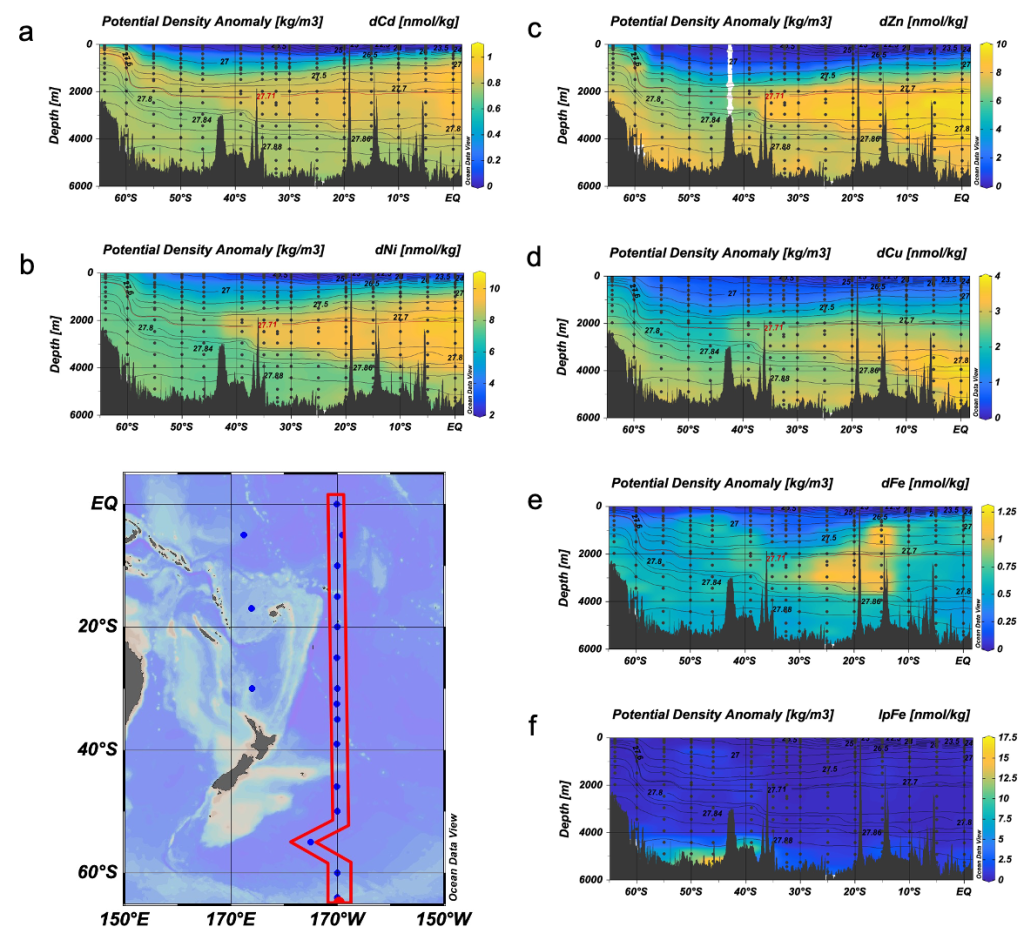North-South section of bioactive cadmium, nickel, zinc, copper and iron along GEOTRACES transect GP19 in the Pacific Ocean
Zheng and his colleagues (2024, see reference below) propose the first full sections of the simultaneous dissolved distributions of five nutrient-type trace metals cadmium (dCd), nickel (dNi), zinc (dZn), copper (dCu) and iron (dFe) in the western South Pacific Ocean along the GEOTRACES transect GP19 (∼170°W) and discuss the key factors influencing their distributions.
Interestingly, these trace elements present different behaviors, that are highlighted by the comparison of their distribution with that of PO4.
Dissolved cadmium exhibited a robust correlation with PO4 within a high PO4 range with a slope that aligns with the Cd/P ratio observed in phytoplankton. In the surface waters north of 50°S when PO4 drops below 0.8 μmol/kg, the Cd/P slope is lower, the exact cause of this kink remaining a subject of debate.
At high PO4 concentrations, dNi, dCu, and dZn increased independently of PO4 while dNi and dCu are linearly correlated with PO4 when phosphate concentrations are low.
The slope of the dFe vs. PO4 relationship was considerably lower than the Fe/P ratio observed in phytoplankton and strong scavenging of dFe is observed throughout the water column in the western South Pacific.
Since part of the section is very close to active hydrothermal sites in the Fiji basin, the authors established a significant impact of hydrothermal activity on the distribution of manganese (Mn), Fe, and Cu. They suggest that dFe is scavenged from deep water in a manner akin to dMn. Notably, no significant anomalies were detected for Cd, Ni, and Zn in regions influenced by hydrothermal plume.


Reference:
Zheng, L., Minami, T., Takano, S., & Sohrin, Y. (2024). Distributions of cadmium, nickel, zinc, copper, and iron in the western South Pacific Ocean: Local sources of the nutrient-type trace metals. Marine Chemistry, 263–264, 104411. doi:10.1016/j.marchem.2024.104411
